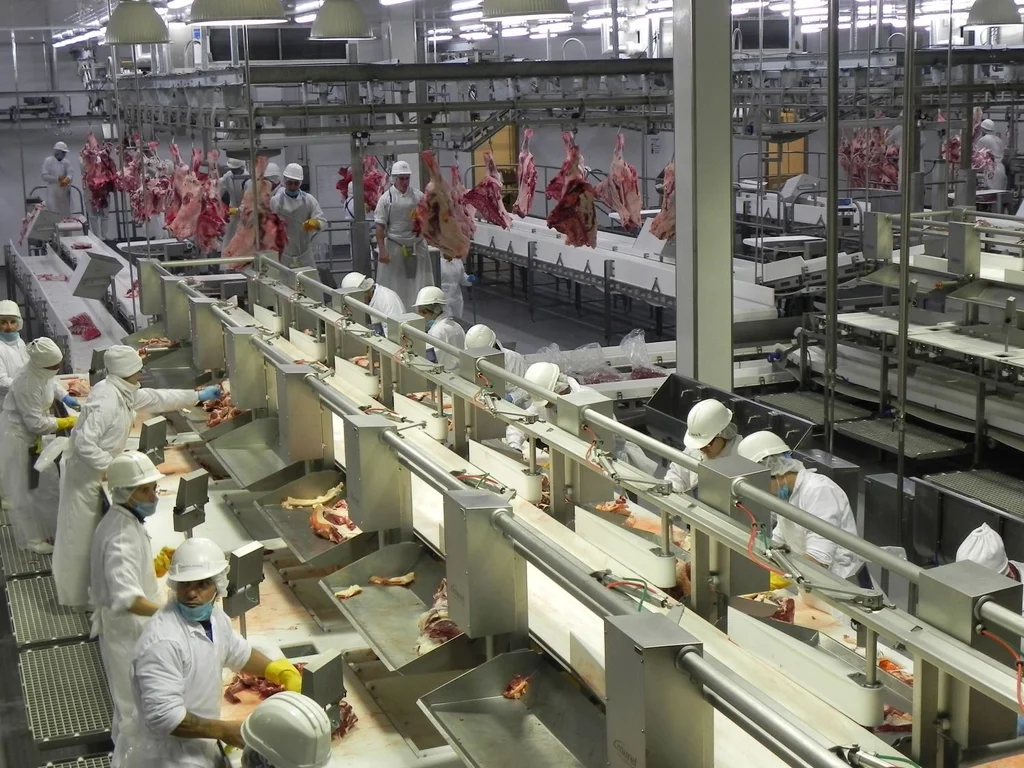This Sunday, as on every May 29, the National Meat Day is commemorated in Uruguay. The chosen date has an explanation: it is the beginning of the first voyage of a refrigerator ship –Le Frigorifique– across the Atlantic carrying frozen meat from the Río de la Plata to Europe in 1876.
On this new anniversary of that celebration, from the National Institute of Agricultural Research (INIA) it was highlighted that the trust and innovation of the national meat chain make Uruguay a reference country in the worldthat through the years the producers, the industry, science and technology have worked to improve the product and its production process in order to keep it competitive in the world concert, where the country is in eighth place as an exporter and seventh as a consumer of beef.
To that, in a report to which he agreed The Observera set of considerations is added, among them that “Uruguay is the country that exports the most beef per capita considering all the countries in the world and, at the same time, is the second that exports the most meat per inhabitant considering all meats”as indicated by the agronomist Gustavo Brito, researcher of the Institute’s Meat and Wool Program.
“Between 20 and 25% of the beef produced by Uruguay is consumed internally and between 75 and 80% is exported. This last figure is not minor if we consider that, Of all the bovine meat produced in the world, only between 15 and 18% enters the export circuit. We reach more than 100 markets with this product, which determines that we are exposed to the demands of international consumers and that the country’s production, export and differentiation strategy is relevant”, said the agronomist Fabio Montossi, researcher of the Meat and Wool Program of INIA.
In reference to the quality of the product, the agronomist Santiago Luzardo, another of the researchers from the INIA Meat and Wool Program, explained that “it is a very broad concept that can vary among consumers, it encompasses intrinsic characteristics of the product, such as the colour, tenderness, juiciness, flavor and smell, but also those associated with the production process, such as complying with animal welfare protocols or caring for the environment”.
john samuel
Cattle farming, with a stock of almost 12 million heads in Uruguay.
The test: Uruguayan meat in dozens of markets
In the case of Uruguay, the expert explained that “irrefutable proof of the quality of the meat is that we export to dozens of markets. If we did not meet the highest standards many doors would be closed, although there is always room for improvement”.
“The product that Uruguay sells has a very good and recognized quality”Brito stated.
He explained that there is important information generated by INIA that shows that the type of meat that is exported, regardless of whether the productive system where the cattle grows is pasture or corral, ensures tenderness. Likewise, the fact that the animals are fed mostly based on pastures “guarantees a better composition of the fat of the meat and a greater nutritional benefit for the consumer.”
Meat is sold, confidence is sold
The quality of the processes is another key item to guarantee the presence and credibility of Uruguayan meat in the markets. “We not only sell meat, but also trust, and that is achieved through a country brand and certification processes based on robust data that guarantee how we produce. To generate these robust and objective data, the contribution of science and institutes such as INIA is essential”Montossi pointed out.
In Uruguay there are various certifications associated with production processes that include different aspects such as animal welfare, the breed of the animal with the development of brands and the type of production. “That is increasingly certified and regulated, and when a certification is launched, it requires the support of science and technology to be credible and accepted by the marketsMontossi said.
In the case of INIA, Brito explained, “the scientific contribution in production terms begins at the first link in the chain, with the Genetic Improvement Program, where meat characteristics associated with yield and quality are evaluated. Added to this is the study of feeding systems to find out how they affect butcher performance, and finally we investigate how genetics and the feeding system affect tenderness, fatty acid composition, juiciness and other meat attributes. ”.
Together with the meatpacking industry, INIA has also worked on a protocol for certification of organically produced meat and with the National Meat Institute (INAC) and the Ministry of Livestock, Agriculture and Fisheries (MGAP) on defining the good animal handling practices from shipment until the product arrives at its destination.
Likewise, there are lines of research aimed at improving the shelf life of meat that is exported chilled and that usually takes between 100 and 120 days to reach the consumer’s table.

john samuel
The Uruguayan refrigeration industry supplies the domestic market and exports.
Confidence behind every kilo of meat
“The greatest differential that Uruguay has is the generation of trust behind each kilo of meat that it produces and exports. We are a credible country and this is confirmed by the way in which we have faced critical situations. In a pandemic, production, industrialization, certification, and exports did not stop. When foot-and-mouth (fever) appeared, we declared it publicly and we were the first country to return to the international market once the crisis was over, we even generated an individual traceability process that is an example in the world. We are one of the countries with the lowest risk of mad cow disease. There was science and technology behind these and other milestones in the meat chain, and INIA was directly and indirectly involved,” said Montossi.
Luzardo pointed out that there are aspects that are considered differential, but in reality they are decisive. “Safety is not a differential because it is not an option for the country, it is what determines whether or not it accesses the markets. It is thought that the same thing could happen with animal welfare, in a few years it will not be what differentiates you or something for which you pay more, but rather what enables you to enter destinations or not”.
At the market level, the meat industry must also consider the new plant-based and laboratory-based protein alternatives that have gained popularity in recent times. “Surely these products are going to grow and this is shown by studies, but they are not called to compete directly with Uruguayan premium meat. An open country should not contradict whether a consumer can choose a hamburger made from vegetable protein, one produced in a laboratory, or one made from high biological value animal protein. Moreover, with a comprehensive vision of agro-production, I consider it an opportunity for Uruguay to position itself to export high-quality plant-based proteinsMontossi said.

Carlos Pazos
Uruguayan export meats.
Tariff and health challenges
For the researcher, however, One of the main challenges to increase the level of access to markets involves health and tariff issues.
“This year an approximate amount of US$ 3,000 million is going to be exported and about 10% is going to go to tariffs. This is a pending issue in which Uruguay must work continuously to reduce tariffs and thus be able to enter certain markets”.
Regarding this, he pointed out that “it is a task that is on the prioritized and agreed agenda of all the agents of the meat chain and it is not achieved from one day to the next since it requires commercial agreements. We are talking about a highly controlled, quantified market that depends on negotiation between countries. If the commercial side is not worked on, everything becomes more complex”. “This can be transferred to sheep meat, which is positioned in a high-value segment within the international animal protein market and where it exceeds sanitary requirements for the export of bone-in meat, has preferential trade agreements and has a greater supply during the year is highly relevant”, said Brito.
As for the investigation, Montossi concluded that the challenge for the future is to combine complex issues, such as profitability and agribusiness, the impact on the environment, and animal health and welfare..
“It is clear that the comprehensive vision, communication and certification of these processes is key to generating credibility and everything must have a solid scientific basis. To remain competitive it is no use being good at one and bad at others, you have to be good at all of them, and that requires very good science and technology with a comprehensive vision”, he said.
On May 29 we celebrate Meat Day, which was established by INAC a few decades ago to have a date on which to share and celebrate the importance of meat in the development of the country and in feeding people.
> https://t.co/aOxJ5p5BYB pic.twitter.com/ASFRl8wZIg– INAC Uruguay (@INAC_Uruguay) May 27, 2022
















